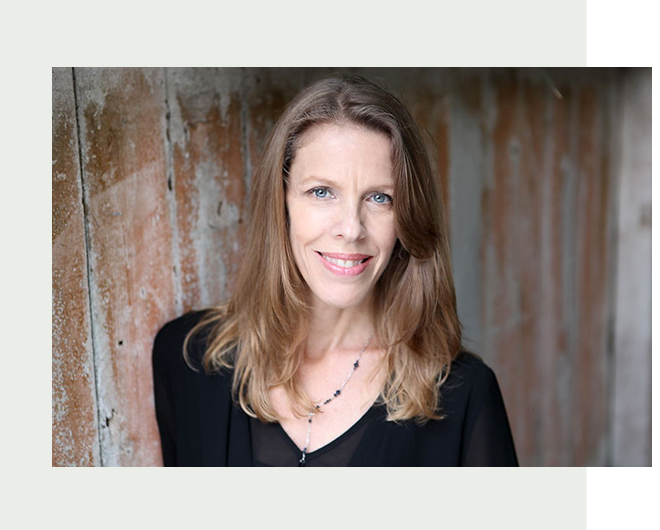Developing this approach to treating OCD has been a highly integrative experience for me, drawing from many facets of both my personal and professional experience. I studied at Pacifica Graduate Institute because of its interdisciplinary and cutting-edge approach.
My Education and Training
Like many clinicians in the early ’90s, I was trained in psychoanalytically based talk therapy. However, my first clinical experience as a brand-new 25-year-old therapy intern was at a residential treatment center for adolescents that plunged me into a crash course in trauma work and family systems therapy.
This work had almost nothing to do with the lovely archetypal theories I had written papers about. What it gave me, however, was invaluable experience in sitting with pain and making friends with fear. I found myself doing therapy on a bathroom floor and facilitating multi-family groups where angry teens throwing chairs was not uncommon.
After becoming licensed, I continued to work with adolescents and their families and developed experience in treating a wide range of issues, from substance abuse and eating disorders to educational and learning challenges, all in the context of family systems.
When I decided to pursue a PhD, I discovered neuroscience and attachment theory. I trained intensively with UC–Berkeley professors and attachment researchers Mary Main and Eric Hesse, who deeply influenced my understanding of the relationship between the internal and the external interpersonal worlds.
I became certified in scoring the Adult Attachment Interview (AAI) when my daughter was very young and was writing my dissertation on attachment when everything changed.
OCD Suddenly Becomes Personal
On December 26, 2011, my normally sunny eight-year-old daughter woke up gripped by intense, irrational fears. Over the next months, her symptoms continued to unfold, and they became more acute. She asked repetitive questions for hours, feared that her favorite foods were poisoned, and became terrified of dying. She wouldn’t eat most foods or go into grocery stores. She avoided some of her toys, eventually refused to go into her bedroom, and stopped using certain words.
At first, we didn’t know what was happening to her. Eventually, we learned she had a sudden onset, severe form of OCD that a recent strep infection may have triggered. After a lot of research and with the help of various therapists, she finally found her way to an intensive outpatient program. Three hours of treatment four days a week was what it took to ease her symptoms because her OCD was so severe that she was not able to eat enough to sustain her body.
What I noticed during this time was that even though I was a mental health professional with doctoral-level education, and I had been working with kids and families for more than 15 years, none of my training had prepared me to understand her symptoms. As I learned from the family program at the OCD Intensive Outpatient Program (IOP), much of what I did to try to help her was accommodating OCD and making her worse.
Watching My Daughter’s OCD Treatment
I watched and participated in her treatment as she did cognitive behavioral therapy with exposure and response prevention, and to my delight, she started to get better very quickly. Sometimes, the treatment was excruciating, but I couldn’t argue with it because it was working. And that was the beginning of a new educational journey for me.
We saw such a transformation in her that I wanted to learn how to offer that level of healing to others, so I abandoned my work on attachment theory, went back to school yet again, and trained in behavioral therapy at the International OCD Foundation’s Behavioral Therapy Training Institute, where I learned the basics of exposure therapy and why it works.
I worked in an OCD clinic for a year to get more experience and then shifted my energy to refocusing my private practice so that now, and for the past ten years, 90% of my clients have OCD or a related anxiety disorder.
Discovering IFS For OCD
My introduction to IFS was through the writing of Martha Sweezy, who, along with Richard Schwartz, has written many of the key texts and manuals about Internal Family Systems. I was riveted by the content of her first collection of essays on IFS therapy, which brought me back to the roots of how and why I was drawn to psychotherapy in the first place.
Before learning about IFS therapy, my professional move towards working with clients who have OCD had already been highly rewarding, and I loved the clarity and effectiveness of CBT with ERP. But I had begun to wonder whether some other way of providing treatment could access the same fundamental healing mechanisms but with a less painful, more inviting tone as well as a larger view that included sensitivity to trauma and other factors that complicate standard treatment.
My daughter’s refusal to ever return to therapy after her experience at the IOP, in spite of its effectiveness for her, had made me wonder if we could offer help to people in a gentler way. Internal Family Systems reignited both my interest in the deeper realms of psychology and my curiosity about whether and how these two worlds could come together.
My Approach to Using IFS to Treat OCD Patients
As I began to incorporate IFS into my work with clients who have OCD, I realized that although there are some distinct features in these systems that are critical to understand and appreciate, IFS could, with care, be used safely and effectively in the OCD population. In my practice, I began to see a strong connection between the underlying mechanisms of IFS and exposure therapy.
I believe my treatment approach—IFS-informed ERP, aka Self-led encountering and relating to parts—makes recovery possible for many individuals who are not able or willing to do traditional ERP, and it will prevent many people from experiencing the treatment aversion that keeps them from engaging in therapy after ERP.








